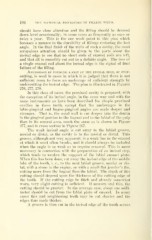Page 436 - My FlipBook
P. 436
194 THE TECHNICAL, PROCEDURES IN FILLING TEETH.
should have close attention and the filling should be dressed
down level occasionally ; in some cases as frequently as once or
twice a year. This is the one weak point in this plan which
becomes a menace to the durability of fillings restoring the lost
angle. In the final finish of the walls of such a cavity, the most
scrupulous attention should be given to the parts about the
incisal edge to see that no short ends of enamel rods are left,
and that all is smoothly cut out to a definite angle. The loss of
a single enamel rod about the incisal edge is the signal of final
failure of the filling.
Anchorage by forming a step in the incisal edge, or over-
cutting, is used in cases in which it is judged that there is not
sufficient room to form an anchorage of sufficient strength by
undercutting the incisal edge. The plan is illustrated in Figures
276, 277, 278.
In this class of cases, the proximal cavity is prepared, with
the exception of its incisal angle, in the same way and with the
same instruments as have been described for simple proximal
cavities in these teeth, except that the anchorages in the
labio-gingival and linguo-gingival angles are made deeper and
stronger. That is, the axial wall is cut deeper into the dentin
in the gingival portion to the lingual and to the labial of the pulp
than in its central area, much the same as is shown in Figure
277, and in cross section in Figure 267.
The weak incisal angle is cut away to the labial groove,
mesial or distal, as the cavity is to the mesial or distal. This
groove, although not very apparent, is a weak line in the enamel
at which it most often breaks, and it should always be included
when the angle is so weak as to require removal. This is more
necessary in connection with the preparation of an incisal step,
which tends to weaken the support of the labial enamel plate.
When this has been done, cut away the incisal edge of the middle
lobe of the tooth, i. e., to the next labial groove, mesial or dis-
tal, with a stone in the engine, or with a small flat jeweler's file,
cutting more from the lingual than the labial. The de])th of this
cutting should depend upon the thickness of the cutting edge of
the tooth. If tlie cutting edge 1)e thick and already somewhat
worn, very slight cutting is sufficient. If unworn and thin, the
cutting should be greater. In the average case, about one milli-
meter should be cut from the labial plate of enamel. In many
cases this and neighl)oi-iug teeth may be cut shorter and the
edges thus made thicker.
A groove is then cut in the incisal edge of the tooth across


